Optimizing aquaculture wastewater treatment by marine microalgae cultivation with a circular bioeconomy approach
DOI: https://doi.org/10.3856/vol53-issue3-fulltext-3341
Abstract
The urgency of optimizing wastewater treatment highlights the need for a sustainable circular bioeconomy. One promising strategy involves using microalgae to treat wastewater, producing both clean water and valuable biomass-an approach that minimizes the environmental impact of the aquaculture industry. The culture medium's nitrogen/phosphorus (N/P) ratio plays a crucial role in microalgal productivity and nutrient removal due to species-specific variations in adaptability and cell composition. Since wastewater N/P ratios fluctuate depending on the source, optimizing microalgae-based treatment requires carefully adjusting these nutrient levels. This study investigated the growth of three indigenous marine microalgae strains belonging to two species, Nannochloris (NRRE-1) and Nannochloropsis (NSRE-1, NSRE-2) in an aquaculture wastewater-based medium under varying N/P ratios (2, 4, 6, 9, 12, 14, 18, and 20). Results indicated that biomass productivity was significantly higher at N/P ratios of 9, 12, and 14 than at lower (2, 4, 6) and higher (16, 18, 20) ratios. The highest recorded biomass productivity (~10 mg L-1 d-1) was accompanied by relatively low nitrogen removal (~20%) across all tested conditions. To enhance wastewater treatment efficiency, phosphorus supplementation was applied to achieve specific N/P ratios (9, 12, or 14). This optimization led to a 350-470% increase in biomass productivity and improved nutrient removal efficiency (~90%). These findings suggest that strategic phosphorus supplementation can significantly enhance microalgae-based wastewater treatment in aquaculture systems.



